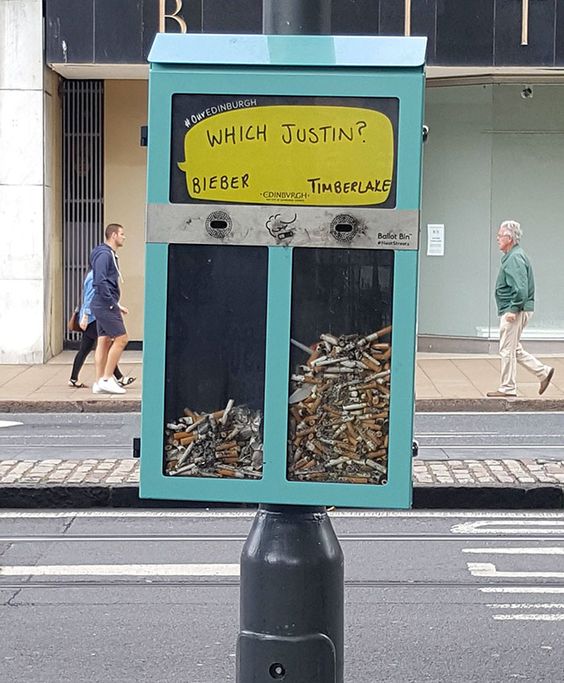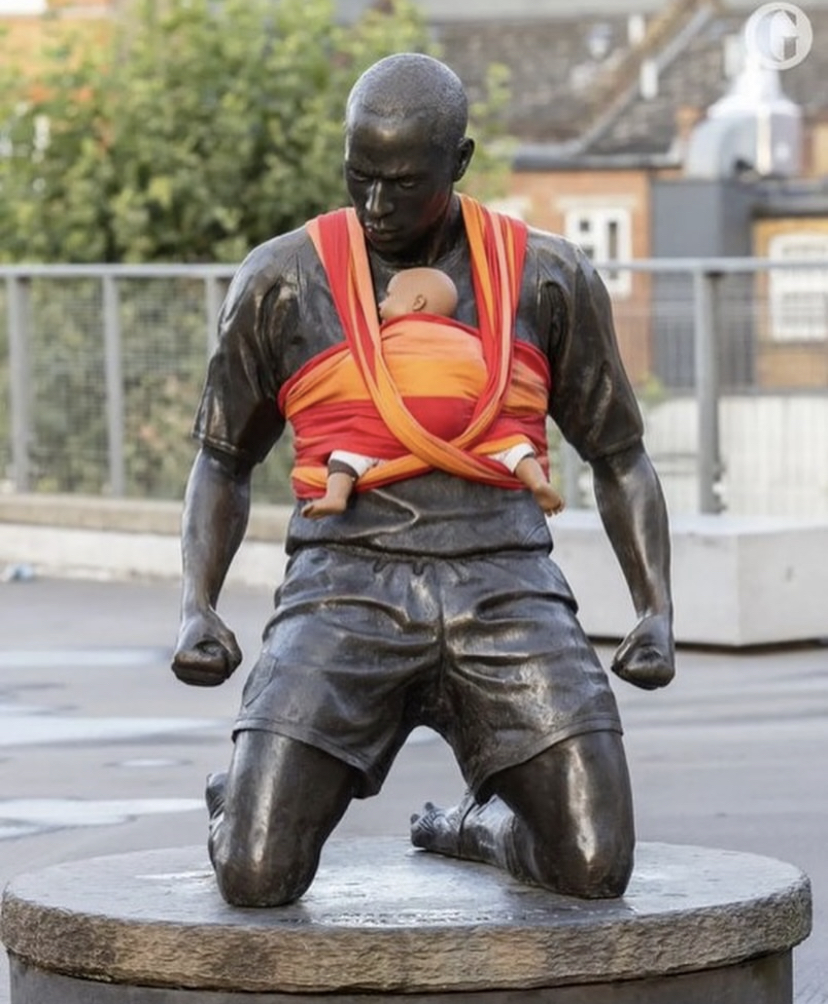VISC 520 Studio ︎︎︎ Project 2 | Schedule | Resources | Drive
Behavior Change (Shikake) — Help Someone Do Something

Advertising Agency: Saatchi & Saatchi, Copenhagen, Denmark


Objective:
Students will explore the concept of Shikkake, a design technique that subtly influences behavior through indirect nudging rather than direct commands. They will identify a behavior that a friend(s) or family member(s) or group of people wishes to change and design a Shikkake that prompts (encourages) this behavior change.

Shikkake design is a way to change people's behavior by gently nudging them rather than giving direct instructions. It was introduced by Professor Naohiro Matsumura. The idea is to make small changes (or nudges) in the environment that encourage people to act in a certain way without them even realizing it. We will use the key points of shittake design in the interventions you create:
Subtle Influence & Positive Encouragement:
The design should encourage good behavior by making it attractive, fun, rewarding and/or easier to do, not by punishing bad behavior.
Contextual:
Shikkake designs are often part of the surroundings, influencing behavior through the environment (and an environment’s affordances) rather than shouting direct orders.
Concrete & Intuitive:
Good Shikkake designs are easy to understand and use clear cues to guide behavior.
Steps:
1. Research: Interview a friend or family member to identify a specific behavior they wish to change or observe an audience or phenomenon that isn’t inclusive or isn’t working. Understand the context and the specific behavior you want to change.
Examples:
- Develop a Reading Habit
- Eat Better
- Physical Activity or
Working Out - Recycling
- Water Conservation
- Consuming Less
- Finding Opportunities
to Volunteer - Reduce Littering
- Connect with Relatives
or Friends More - Drink Less
- Promoting Bike Usage
- Reduce Screen Time
- Get More Sleep
- Drink More Water
- Practice Gratitude
- Stay Off Phone While Driving
- Use Public Transit
- Reduce Single-Use Plastics
- Boost Attendance at a Club
or Organization's Event - Support Mental Health
- Reduce Energy Usage
- Remember to Floss
- Promote Work-Life Balance
- Make up with Someone
- Boost Creativity
- Encourage Continuous Learning/Empathy
- Promote Hand Washing
- Reducing Noise Pollution
- Encourage Local Shopping
- Promote Composting Practices
- Reduce Plastic Water Bottle Usage
- Encourage Wildlife Conservation or Leave No Trace Ethic
- Promote Safe Cycling Practices
2. User Analysis: Identify who the target audience is (e.g., children, office workers, park visitors) and what motivates or hinders their current behavior. What are the barriers? Why aren’t people already doing it?

Key deliverables: Rapid Design Thinking Template



3. Contextual Study: Analyze the physical or digital environment where the behavior occurs. Look for existing elements that can be leveraged or might pose challenges. Spot the opportunities: Where in people's patterns and habits is there an opportunity to change?
Environmental Factors: Consider factors like lighting, layout, existing signage, and user flow that can impact behavior. Consider choosing a communication channel that we have some shared understanding of. (ex. Ticket: Admission, seating, raffle etc. or Signage: identifying a room or directing a visitor somewhere or telling you not to do something etc. or Packaging: protecting a product, or communicating the benefits of something) and how you might subvert that schema and make it mean something new.
Key deliverables: Journey Map, template here with a list of A-E-I-O-U or
- Activities: The actions people perform to achieve a goal
- Environment: The area where activities take place, including the function of each space
- Interactions: The interactions between people and objects in their environment
- Objects: The key elements in a process, including the devices and objects in the environment
- Users: The people whose behaviors and processes are being observed






4. Generate Ideas/Brainstorming: Generate a range of ideas for subtle interventions that could influence the desired behavior. Think about visual, auditory, or tactile cues.
Key deliverables: Idea Sketches with Moodboards to further visualize/contextualize ideas

5. Develop Concepts: Develop a few promising ideas into more detailed concepts. Consider how each concept will subtly influence behavior without being intrusive. User Journey: Map out the user journey to understand how and when the Shikkake will interact with the user.
Key deliverables: More contextualized concept sketches with slide “deck” presentation
6. Design Prototypes: Create sketches or digital mock-ups of your concepts. These can be simple drawings or more detailed digital designs. Material Selection: Choose appropriate materials if the design is physical. Ensure they are durable, appealing, and suitable for the environment.

7. Test and Iterate: Test your prototypes with a small group of users. Observe how they interact with the Shikkake and gather feedback. Refinement: Based on feedback, refine your design to better achieve the desired behavior change.
8. Implement the Shikkake: Develop the final version of your Shikkake design, incorporating all the refinements. Installation: Install or implement the Shikkake in the target environment. Ensure it is placed correctly and integrates seamlessly into the surroundings. Feedback Collection: Collect feedback from users to understand their experience and any areas for improvement. Impact Assessment: Evaluate the effectiveness of the Shikkake in achieving the desired behavior change. Make adjustments if necessary.
Deliverables: Final presentation and reflection on the process: documentation of implementation & feedback